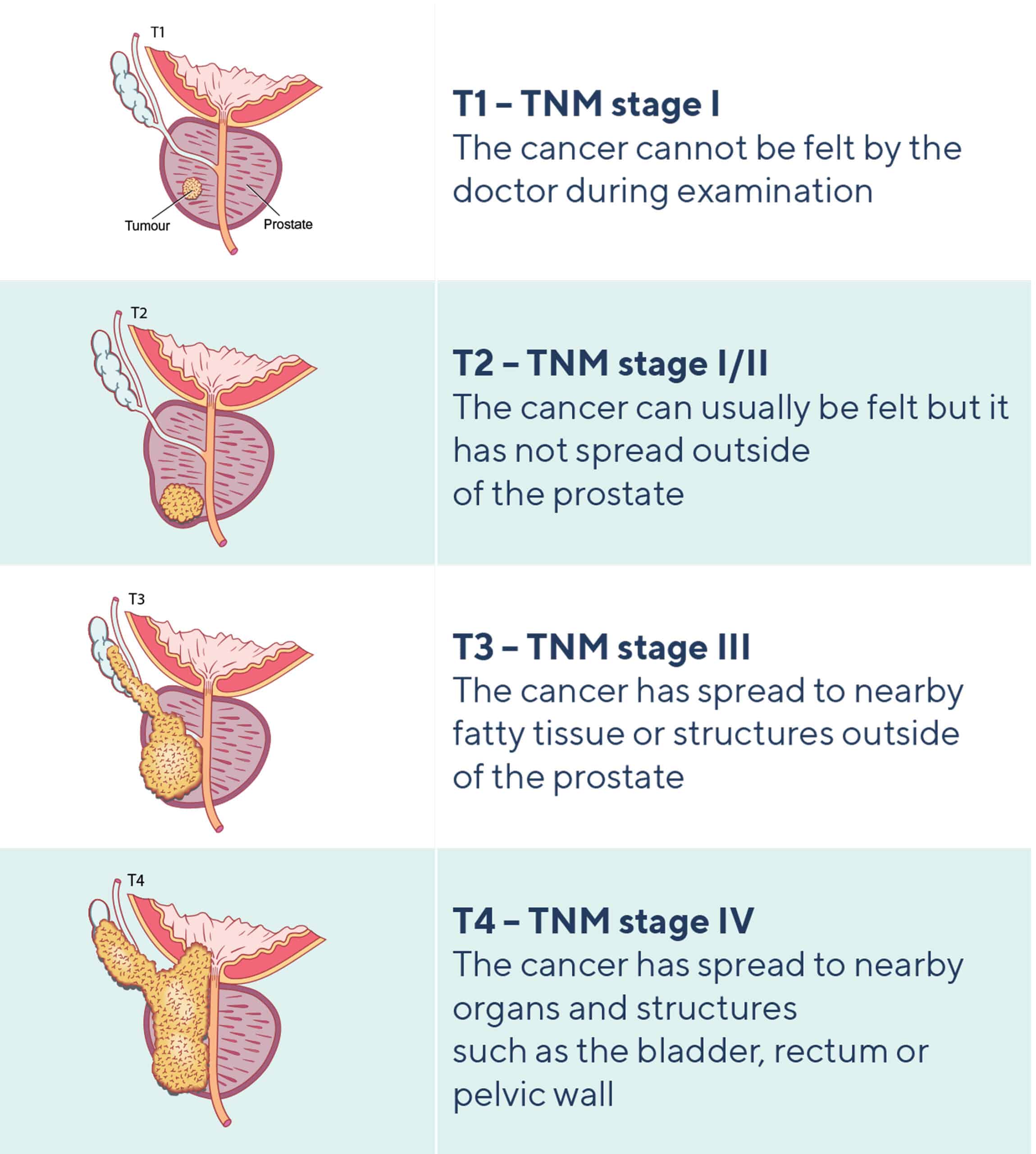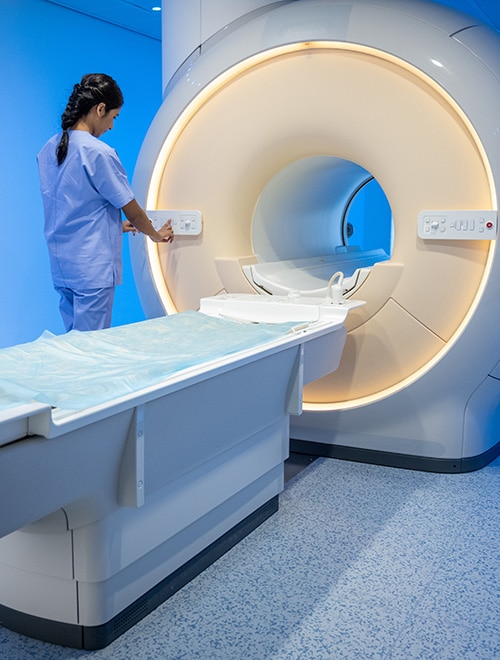- 4 min read
Prostate cancer stage – what does staging mean?
When you are diagnosed, your prostate cancer may be classified by size and where it is located – this is called the cancer stage.
Cancer staging is done to determine the size of your cancer, whether the cancer has stayed within your prostate or if cancer cells have spread to other parts of your body. Your cancer will be classified into one of four stages (I, II, III, IV). This helps your doctor to determine your risk level and discuss your treatment plan with you.
What are the four stages and how are they determined?
The cancer stage is based on your previous clinical tests and scans, including:
- Digital rectal examination (DRE)
- Imaging tests such as CT, MRI, bone scan or PSMA-PET scans
The DRE is a physical check performed by your urologist to check for abnormalities in your prostate’s size and shape, while the scans provide detailed images of your prostate and the surrounding tissues and organs.
Prostate cancer occurs when normal cells grow in an uncontrolled manner. They can continue to grow within the prostate or spread to other parts of the body.
Your urologist will take these results, classify your cancer into one of four stages (I, II, III, IV) using a system called TNM, and determine if you have either of the following types of prostate cancer:
- Localised prostate cancer – cancer that remains in the prostate
- Advanced prostate cancer – cancer that has spread outside of the prostate gland
What is the TNM system for staging prostate cancer?
The TMN system is the standard international system for determining your cancer stage. It involves three parts:
1. Tumour stage (the T in TNM)
This refers to the size of your prostate cancer and how much of the cancer has spread outside of your prostate. Your cancer will be given a T number between T1 to T4.
The lower the number (T1 to T2) the less the cancer has spread.
The higher the number (T3 to T4) the more the cancer has spread.
2. Node stage (the N in TNM)
This refers to whether your cancer has spread into the lymph nodes near to your prostate in your pelvis. Lymph nodes are small bean-shaped clusters of cells that contain white blood cells to help fight infection. They are part of the lymphatic system.
The node stage is scored as:
N0 = there is no spread of cancer to nearby lymph nodes
N1 = there is cancer spread to the nearby lymph nodes
3. Metastasis stage (the M in TNM)
This refers to whether your cancer has spread outside of your pelvis or to other parts of the body, such as bones or other organs.
The metastasis stage is scored as:
M0 = there is no spread of cancer to other parts of the body
M1 = cancer has spread to other parts of the body
What stages are localised and advanced cancer?
Localised cancer is confined within your prostate and can be at tumour stage 1 or 2 (T1 or T2), and either a stage I or stage II cancer under the TNM system. This may also be called early-stage cancer.
Advanced cancer has spread outside of your prostate and can be at tumour stage 3 or 4 (T1 or T2), and either a stage III or stage IV cancer under the TNM system. This may also be called late-stage cancer.

TNM system for determining cancer stage (I to IV)
Localised cancer: TNM stages I or II
Advanced cancer: TNM stages III or IV
As advanced cancer means some cancer cells have spread outside of your prostate. These stage III or IV cancers will also be given a node (N) stage and metastasis (M) stage number (0 or1), depending on where the cancer has spread, and whether the disease has spread locally or to other body organs.
Find out more about the different types of advanced cancer.
What happens after you find out the stage of your cancer?
Finding out the stage of your cancer may be distressing. The cancer experience is very different for everyone even with the same type of cancer.
Most men with prostate cancer can live for many years without any symptoms, and without the cancer spreading or becoming life-threatening. It depends how aggressive the cancer is. If you have a biopsy, your cancer will be graded to see how aggressive or fast growing the cancer is. Find out what your Gleason Score or ISUP Grade means.
Your cancer stage, along with your PSA test results, cancer grade, personal circumstances and preferences, and overall health and wellbeing, helps you and your doctor to decide on the guide the best treatment option for you.
If you need support, advice or information, talk to your doctor or reach out to a PCFA nurse. They can also connect you with support groups, other medical or allied healthcare professionals and resources for you and your family and friends.
Key points
- Cancer stage is determined by the cancer size and location (if it has stayed inside the prostate or spread to other parts of the body)
- Digital rectal examinations and imaging tests are used to stage cancer
- There are four stages of prostate cancer – I, II, III, IV
- The TNM system involves three parts to classify prostate cancer stage (tumour, node and metastasis stages)
- Localised cancer is stage I or II; advanced cancer is stage III or IV
- Staging, along with PSA test results, cancer grade and personal circumstances guide the best treatment options for you






